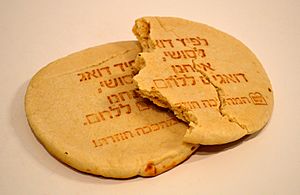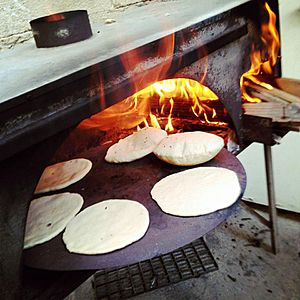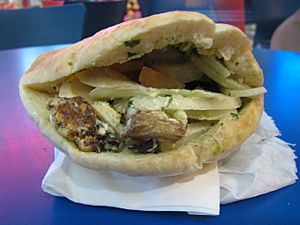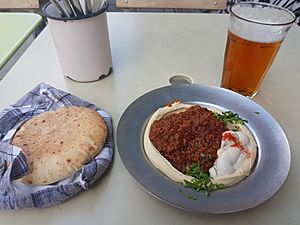Israeli pita facts for kids
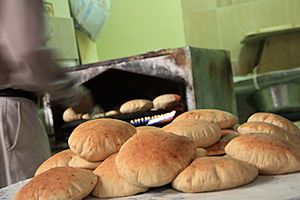
Israeli pita (pitot)
|
|
| Alternative names | Israeli pitta, pitot, pitotim, pita |
|---|---|
| Type | Flatbread |
| Place of origin | Israel |
| Created by | Israelis |
| Main ingredients | Flour, water, yeast, olive oil, kosher salt |
Israeli pita, also called pitot or Israeli pitta, is a special kind of pita flatbread from Israel. People often eat it with hummus and other dips. It's also great as a sandwich bread, filled with tasty things like sabich, falafel, chicken schnitzel, or shawarma. You can find Israeli pita in Israel, the United States, and in restaurants around the world that serve Jewish and Israeli cuisine.
Contents
What Makes Israeli Pita Special?
Imagine a warm, soft, and fluffy bread that's perfect for stuffing! That's Israeli pita. As one food writer, Molly Yeh, said, it's a "thick, spongy, warm little loaf" with a pocket that stays strong even when you fill it up.
How it's Different from Other Breads
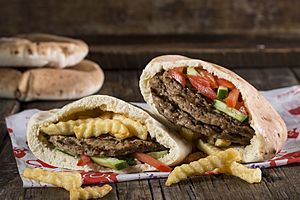
Israeli pita is different from other flatbreads and pitas. It's usually softer, thicker, and has more dough. It always has a pocket inside. Many other pitas, like those from Arab or Greek cultures, are thinner or don't have this pocket. The pocket in Israeli pita has "thick walls." This makes it strong enough to hold popular fillings like sabich, falafel, and shawarma without breaking.
Its Soft Texture
Israeli pita feels very soft and fluffy, almost like a pillow. It's best when it's served fresh and warm, often right out of a wood-fired oven, similar to a pizza oven.
How to Enjoy Israeli Pita
Israeli pita is traditionally served warm and fresh. It's best eaten the same day it's baked.
What to Do with Israeli Pita
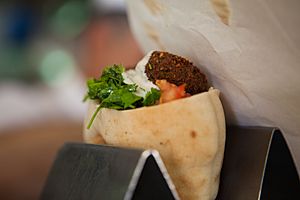
People use Israeli pita for many delicious meals. It's often toasted and filled to make sandwiches like falafel, sabich, chicken schnitzel, and shawarma. You can also dip it into many different spreads like hummus, baba ghanoush, muhammara, zhoug, and olive oil. In Israel, it's a common part of an Israeli breakfast. It's also served with dishes like shakshouka or with eggs and cottage cheese.
Why Israeli Pita is So Popular
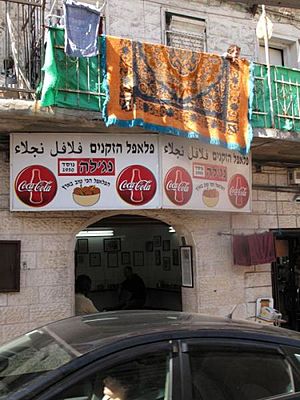
Israeli pita is one of the most popular breads in Israel. It's a key part of Israeli cuisine. You can find it on menus at most restaurants, bakeries, and food stalls across Israel. Since it doesn't contain any animal products, it fits with kosher dietary rules for all types of meals.
Israeli Pita in Pop Culture
